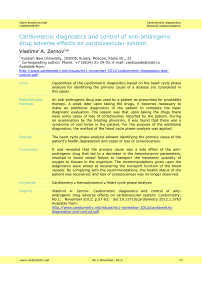Cardiometric diagnostics and control of anti-androgenic drug adverse effects on cardiovascular system
Автор: Zernov Vladimir
Журнал: Cardiometry @cardiometry
Рубрика: Cardiometric diagnostics: practical implementation
Статья в выпуске: 1, 2012 года.
Бесплатный доступ
Aims Capabilities of the cardiometric diagnostics based on the heart cycle phase analysis for identifying the primary cause of a disease are considered in this paper. Materials and An anti-androgenic drug was used by a patient as prescribed for prostatitis methods therapy. A week later upon taking the drugs, it becomes necessary to make an additional diagnostics of the patient to complete the basic diagnostic evaluation. The reason was that upon taking the drugs there were some cases of loss of consciousnes reported by the patient. During an examination by the treating physician, it was found that there was a syndrome of cold limbs in the patient. For the purpose of the additional diagnostics, the method of the heart cycle phase analysis was applied. Results The heart cycle phase analysis allowed identifying the primary cause of the patient’s health degradation and cases of loss of consciousness. Conclusion It was revealed that the primary cause was a side effect of the anti- androgenic drug that led to a decrease in the hemodynamic parameters, resulted in blood vessel failure to transport the necessary quantity of oxygen to tissues in the organism. The recommendations given upon the diagnostics were aimed at recovering the transport function of the blood vessels. By complying with the recommendations, the health status of the patient was recovered, and loss of consciousness was no longer observed.
Сardiometry, hemodynamics, heart cycle phase analysis
Короткий адрес: https://sciup.org/148308725
IDR: 148308725
Текст научной статьи Cardiometric diagnostics and control of anti-androgenic drug adverse effects on cardiovascular system
Aims Capabilities of the cardiometric diagnostics based on the heart cycle phase analysis for identifying the primary cause of a disease are considered in this paper. Materials and methods An anti-androgenic drug was used by a patient as prescribed for prostatitis therapy. A week later upon taking the drugs, it becomes necessary to make an additional diagnostics of the patient to complete the basic diagnostic evaluation. The reason was that upon taking the drugs there were some cases of loss of consciousnes reported by the patient. During an examination by the treating physician, it was found that there was a syndrome of cold limbs in the patient. For the purpose of the additional diagnostics, the method of the heart cycle phase analysis was applied. Results The heart cycle phase analysis allowed identifying the primary cause of the patient’s health degradation and cases of loss of consciousness. Conclusion It was revealed that the primary cause was a side effect of the anti-androgenic drug that led to a decrease in the hemodynamic parameters, resulted in blood vessel failure to transport the necessary quantity of oxygen to tissues in the organism. The recommendations given upon the diagnostics were aimed at recovering the transport function of the blood vessels. By complying with the recommendations, the health status of the patient was recovered, and loss of consciousness was no longer observed. Keywords Сardiometry ≈ Hemodynamics ≈ Heart cycle phase analysis Imprint Vladimir A. Zernov. Cardiometric diagnostics and control of anti-androgenic drug adverse effects on cardiovascular system; Cardiometry; No.1; November 2012; p.57-63; doi:10.12710/cardiometry.2012.1.5763 Available from:
Drug side or adverse effects occur often in practice. It is a serious problem which is difficult to take into account in drug research and development. But it is much more difficult to evaluate the degree of possible adverse effect manifestations and take an adequate decision on how to minimize them. In the given article considered is the case when it was a success both in identifying the cause of the sudden health deterioration due to the drug adverse effects and preparing recommendations to improve the patient’s state of health.
Materials and methods
The paper treats the case of an application of the heart cycle phase analysis aimed at identifying the primary cause of the disease. It is based on an evaluation of the self-regulation mechanism and analysis of the markers of the cardiovascular system compensation mechanism responsible for maintaining the hemodynamic parameters within the norm [1, 2, 3, 4]. The method covers the following procedure:
-
1) An ECG and a RHEO of the ascending aorta are recorded. Both signals are taken from disposable ECG electrodes. This type of recording is given the name “the point-type rheography”.
-
2) Upon completion of the above operations, the following actual phase-related volumes of blood in each heart cycle are calculated by a special PC-assisted device automatically:
SV is a stroke volume, ml;
MV is a minute volume, l/min;
PV 1 is a volume of blood entering the ventricle during the early diastole phase characterizing the suction function of the ventricle, ml;
PV 2 is a volume of blood entering the ventricle during the atrial systole phase characterizing the contraction function of the ventricle, ml;
PV 3 is a volume of blood ejected by the ventricle during the rapid ejection phase, ml;
PV 4 is a volume of blood ejected by the ventricle during the slow ejection phase, ml;
PV 5 is a volume of blood delivered by the ascending aorta as peristaltic pump characterizing aorta tonus, ml.
-
3) Deviations of the calculated parameters from the norms are determined.
-
4) Changes in the ECG form in each heart cycle phase are determined. Significance of the ECG form deviations from the reference curves is evaluated.
-
5) Compensation changes in some phases affecting the neighboring phases are identified.
-
6) A decision on the complexity of the functional changes and adequacy of control actions should be made.
Results
As a result, in the research it was established that the patient’s health deterioration manifested in temporary loss of consciousness and cold limbs syndrome was caused by adverse effects of an anti-androgenic drug used for treatment of prostatitis. Upon identification of the cause, the proper recommendations on how to eliminate the undesired side effects and control the efficacy were issued.
Discussion and conclusions
The patient was subjected periodically to diagnostics examination by the heart cycle phase analysis method. In fig. 1 shown are the patient’s ascending aorta ECG and RHEO curves recorded synchronously. The peculiarity of the ECG is an increase in the T wave amplitude. It indicates an increased aortic dilatation, the purpose of which is to maintain and transport the blood flow pattern formed by the heart in the preceding heart cycle phases. This specific blood flow pattern integrates alternating rings of plasma rings and blood elements and provides for their motion along the vessels practically without friction with minimized loss of energy [1]. The QRS complex on the patient’s ECG curve is within the norm. Minor static myocardium muscle tension occurs that is identified according to a small elevation of the ECG in the S-L phase referred to the isoelectric baseline. The static tension in the S-L phase is caused by a disturbance in the coronary flow. Therefore, this fact is verified by the analysis of the RHEO configuration in the period of the U wave appearing on the ECG curve. If the dicrotic notch on the RHEO coincides with the U wave maximum, it is a marker of the normal coronary flow. If the dicrotic notch appears earlier and is located nearer to the top of the RHEO, it should be treated as the first marker of some problems in the coronary flow. In our case, the patient has the normal coronary flow.
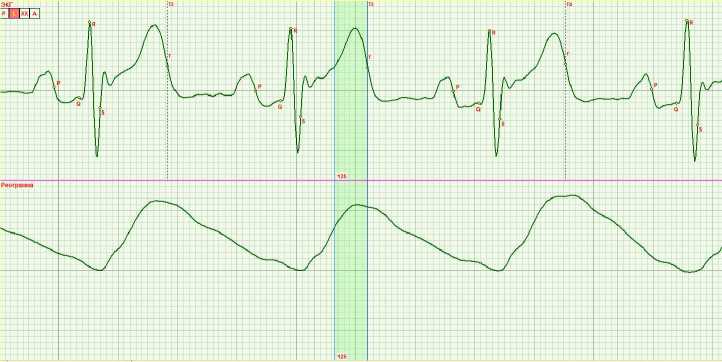
Figure 1. The patient’s ECG and RHEO curves of the ascending aorta before taking drug in prostatitis treatment.
An early pressure buildup is observed on the RHEO indicated herein. Normally, the buildup should begin at the moment of aortic valve opening at the point L. In our case we observe it at the point S. It indicates an insignificant increase in the diastolic pressure. All other characteristics are within their norms.
As to the phase-related volumes of blood, the measured values of which are shown in fig.2 herein, we should state their compliance with the norm. In this case, the calculations show 0% deviation from the norm of hemodynamics.
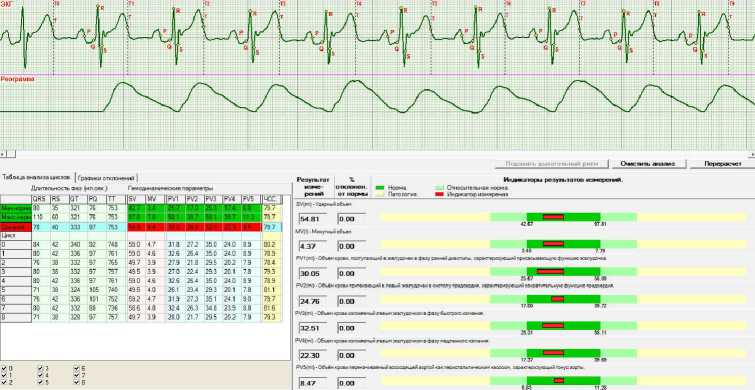
Figure 2. Results of the measured phase-related volumes of blood.
Upon the hemodynamic examination and taking the appropriate measures to improve his health state, there was no medical necessity for the patient to consult his physician.
After a time, the patient reported his health deterioration that was manifested in sudden loss of consciousness and feeling of fear. The patient was examined by his physician again, and a temperature decrease on the surface in the patient was recorded at the time of placing the ECG electrodes to make the hemodynamics diagnostics. The patient also reported a subjective feeling of cold limbs. It denoted inadequate blood supply to the peripheral parts of the body. During the examination, the ECG and RHEO of the form as shown in fig.3 below were recorded.
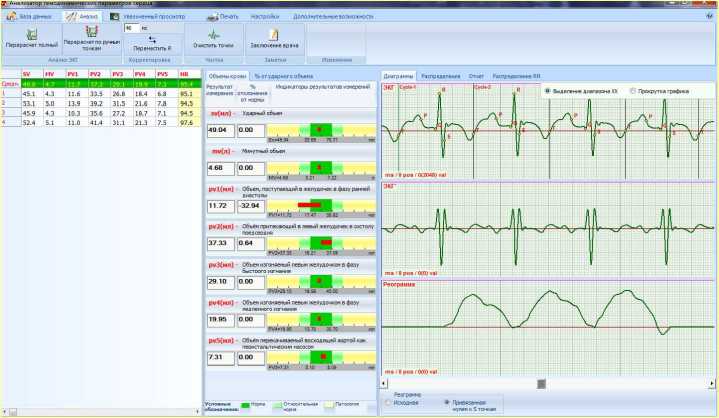
Figure 3. Hemodynamic parameters during the second examination of the patient after his health state deterioration.
First of all, we should pay our attention to the absence of the T wave on the ECG in this figure. To be more exact, we deal with an inversion of wave T in the case considered. Fig.4 below illustrates the more detailed ECG and RHEO curves of the patient in question recorded synchronously. In the heart cycle phase structure, the T wave features the aortic dilatation function. The greater is the amplitude of this wave, the wider is the dilatation of aorta. In our case, no aorta dilation is observed at all, i.e., the aortic baroreceptors do not activate the mechanism of dilatation. It produces a significant hindrance to the blood flow. The necessary quantity of blood elements cannot reach the periphery, and, of course, oxygen deficiency is observed. The manifestations of this process are the syndrome of cold limbs, temporary vertigo and loss of consciousness.
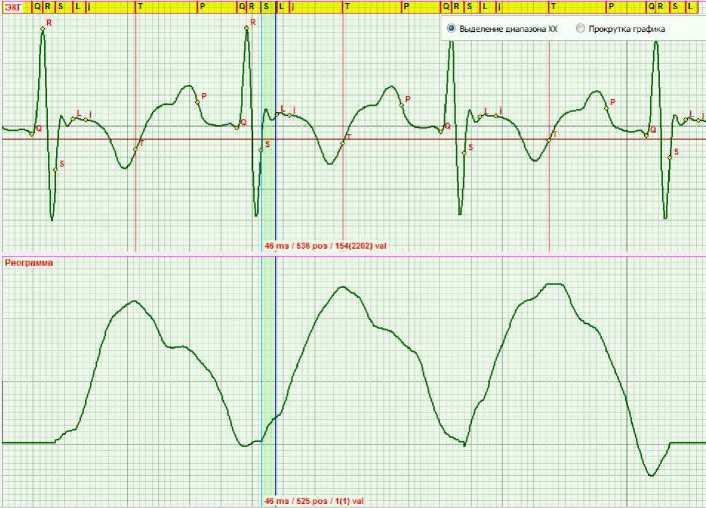
Figure 4. ECG and Rheo recorded in the second examination.
From the ECG and RHEO study, it is evident that in fact there is no early diastole available. The T and P waves are found to be close to each other. An increase in the heart rate due to a decrease in the time of the early diastole is a strong marker of the compensation mechanism to provide for the required oxygen quantity increase. However, it is still at the limit of the norm, but it is no longer capable of providing the proper performance. The reason is that the operation of the baroreceptors in the aorta is interlocked. Fig.3 delivers a good illustration that we deal with a deficiency of blood volume in the early diastole phase of – 32,94 % of the norm according to the screen indication.
During the hemodynamics examination, the patient reported that he took the drugs administered for prostatitis treatment. The drug was advised to normalize the prostate function. The prescribed prostatitis medication was successful, and it was stated that the shape of prostate became normal. However, some undesirable side effects of the drug appeared that were connected with interlocking of the operation of the baroreceptors in the aorta.
Upon the hemodynamics examination of the patient, it was recommended by the physician to terminate the anti-androgenic drug therapy but start with L-carnitine drugs taking. That was required to recover the energy in the cells, first and foremost in mitochondria, since the completed treatment led to anaerobic conditions of the cell functioning due to oxygen deficiency. It would cause further serious problems in the nearest future. The patient was administered to take another measures aimed at increasing serotonin and endorphine production.
Taking the prescribed measures and complying with all recommendations was successful for improving the health state of the patient, and his cold hands and legs syndrome disappeared, i.e., the blood circulation in the patient was normalized. Vertigo and loss of consciousness were no longer reported.
The “happy end” in the above case comes because it is possible to obtain the sufficient data for the causality analysis that is at the same time the basis for the heart cycle phase analysis. A month later, we were reported that the patient had problems with prostate again. But now we are sure that in the future every anti-androgenic drug adverse effect on the cardiovascular system can be successfully controlled in such patients with use of the cardiometry including the heart cycle phase analysis.
Statement on ethical issues
Research involving people and/or animals is in full compliance with current national and international ethical standards.
Conflict of interest
None declared.
Список литературы Cardiometric diagnostics and control of anti-androgenic drug adverse effects on cardiovascular system
- Rudenko M., Voronova O. & Zernov V. Theoretical Principles of Heart Cycle Phase Analysis. Fouqué Literaturverlag. ISBN 978-3-937909-57-8, Frankfurt a/M. München -London -New York; 2009.
- Gyton A. Circulatory physiology. Cardiac output and its regulation; translated into Russian by Kossitskaya G.I., edited by Kossitskiy G.I. Moscow, Publishing House Medicine 1969: 472 pages
- Folkow B., Neil E. Circulation. Translated into Russian, published by “Medicine”, Moscow 1976: 19
- Wiggers C.J. Circulatory Dynamics. Translated into Russian and published by “IL” Moscow 1957: 78

